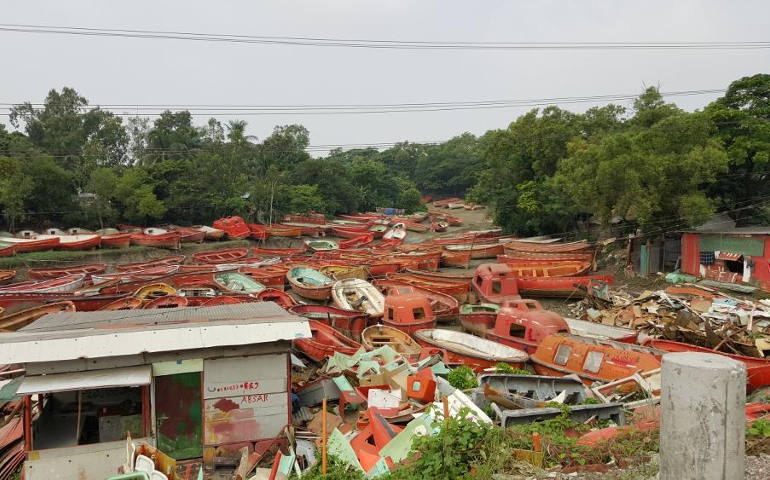
It does not take long to understand why Bangladesh is often cited in discussions about climate change and why the country could often be discussed during the United Nations' conference on climate change, which runs Nov. 30 to Dec. 11 in Paris.
Anyone who has traveled, as I recently did, from the Bangladeshi capital of Dhaka to the country's "second city," Chittagong, along the coast can see how low-lying areas are vulnerable to flooding from catastrophic, or even noncatastrophic, events.
From a train window, this flat, green expanse can be singularly beautiful. It has been said there are shades of green in Bangladesh you don't see anywhere else.
Yet the geographic position and shape of the Bay of Bengal make this coastal area uniquely vulnerable to the hazards of nature. In November 1970, at least 300,000 people — and by some estimates, perhaps as many as 500,000 — perished in the Bhola cyclone, one of the deadliest cyclones in recorded history.
Though Bangladesh has been spared an event of that scale since, there have been numerous cyclones, floods and storms, and the cumulative effects have been devastating.
On Nov. 23, a U.N. report put this dynamic in a global context, and the news is sobering. The report, "The Human Cost of Weather-Related Disasters," concludes that since the first international climate change conference in 1995, 6,457 recorded weather-related events — droughts, floods, heat waves and the like — have caused 90 percent of major disasters in the world.
Those numbers may not capture the imagination. Don't weather-related events always cause most of the major disasters we experience? What is telling about the statistics — culled and analyzed by the U.N. Office for Disaster Risk Reduction and the Belgium-based Center for Research on the Epidemiology of Disasters — is what they say about increasing incidents. There have been 335 weather-related disasters annually between 2005 and 2014, a 14 percent increase from 1995 to 2004. And those numbers are double the level of disasters from 1985 to 1994. Double.




